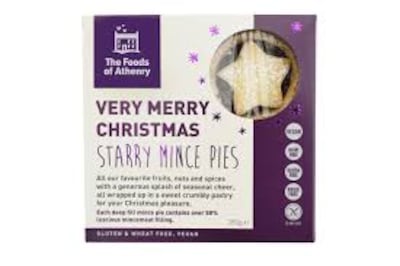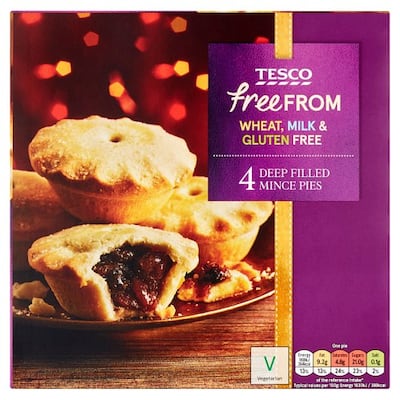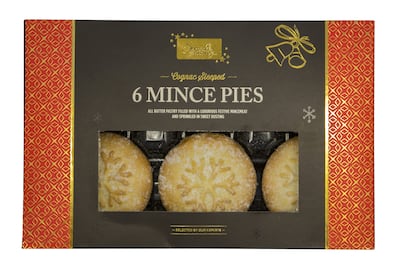Once December arrives it’s open season on mince pies in our house. Pudding and cake can wait until Christmas week, but those fruity pies are perfect for the run-up.
The best ones may be homemade, but there are some pretty good ones in the shops too. My favourites are the Starry Pies from the Foods of Athenry because they are as Irish as they can be, taste great and have few allergens, which is helpful when you don’t know who may be popping by for a Christmas drink and a little something.


They have nuts, but no gluten, eggs or dairy. In place of butter, they use non-hydrogenated margarine made using rapeseed oil and sustainable palm oil. They also have glucose-fructose syrup, which is similar to the high-fructose corn syrup blamed by many in the US for some of its obesity problems. This syrup is cheaper than sugar and easy to work with so ingredients manufacturers love it.
It pops up here as an ingredient of the glace cherries and the mixed peel, which are bought in ready made.
Even those who make their own pies will find that the glace fruits on sale in supermarkets are often half glucose-fructose syrup. Ready-made mincemeat in jars has glucose-fructose syrup for that same reason. It’s not something you would want to have all the time, but then mince pies are not on sale all year round.
So this sweet syrup is in most of the mince pies I found on sale, except for those in the Tesco Free From range. These have their own foibles including an allergy warning in pink that they may contain peanuts. This means they have been made in a factory that also handles products with nuts in them.

A surprising number of brands including Lidl’s Favorina range have a similar note in tiny writing on the back of the packet, which is shocking considering peanuts can be fatal to those with an allergy.
Given that many of the pies sold here are made in factories in the UK or farther afield, it shouldn’t be surprising how similar some are. Aldi’s All-butter Specially Selected classic mince pies with Courvoisier VS cognac are remarkably like Tesco’s finest All-butter pastry deep filled mince pies with Courvoisier VS cognac.
The biggest difference is that the Tesco ones have cottonseed oil, a cheap by-product of the cotton farming industry, which is commonly used in the US in mayonnaise, margarine and baked goods.
Rising costs
So don’t be fooled by the words “all-butter” on the cover of packets of these or other mince pies, those words refer only to the pastry, not to the filling which usually contains other oils such as sunflower or rapeseed.
British consumer magazine Which reported recently that the rising cost of ingredients, such as butter and dried fruit, means that manufacturers are switching to cheaper options to keep prices down.

Serving sizes on sweet treats in supermarkets can often be more confusing than helpful. With mince pies, however, one pie is a serving. So it’s easier to compare. It’s worth taking the time to look because the size of each pie and the number of calories it has can be quite different. Ignoring the mini-ones, the average size varies from a standard 54g to 75g from the Foods of Athenry.
The calorie count varies too ranging from 210kcal for Marks and Spencer’s standard all-butter pies up to 260kcal for Tesco’s Free From pies, though to be fair they weigh a hefty 68g each.
Deep filled pies are often the most calorific, though not necessarily the ones with the buttery pastry. It’s written on the front of most packets for easy comparison or on the nutrition information panel.
There are other symbols that have nothing to do with food. One of these is what looks like a little drawing of a tree with a tick attached and the letters FSC underneath on Marks and Spencer’s packaging. It indicates that the British retailer has made a commitment to use sustainable wood certified by the Forest Stewardship Council, an international non-profit organisation that promotes responsible management of the world’s forests.
Marks & Spencer asks suppliers to use FSC wood not only for its furniture but also for the wood used to build and fit its stores, to make the wood and paper products used to run the business, in marketing materials and its paper packaging.
So even in eating mince pies, we can help to make a difference.
FOOD LABELS SERIES
- Bread
- Soup
- Crisps
- Sliced ham
- Cream crackers
(search Rose's other food labels articles here)










